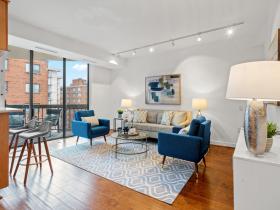 Making Space for the Arts in the DC Cultural Plan
Making Space for the Arts in the DC Cultural Plan
✉️ Want to forward this article? Click here.

Mural by Naturel in NoMA
DC is in the process of creating its first ever Cultural Plan, a blueprint that seeks to invest in and build upon the people, places and community ideas that define culture in the District.
The plan will be released in Spring 2017, but in the meantime, the city, via a joint effort between the Office of Planning, Commission on the Arts and Humanities, and the Office of Cable Television, Film, Media and Entertainment, has been conducting a series of forums throughout the city to identify challenges and talk through potential solutions regarding cultural placemaking.
A large part of that discussion is focused on the creation and preservation of space for the arts and culture in the city. While the arts are a draw for people and create demand in neighborhoods that incorporate art elements, little attention is paid to the creatives who contribute to that.
One chief concern that resonates beyond the artistic sphere is the dearth of affordable housing and affordable live-work space in the city. Although concepts like the Brookland ArtSpace Lofts are functioning well for those who are able to secure units there, plenty of creatives are either displaced out of the area or are discouraged from pursuing a career in the arts. “It leads to a loss of talent,” an attendee at a forum last night noted, citing her experience as one of a few out of her class of art school graduates who were able to remain in the city. “As the years go by, I think a lot of people find that it’s prohibitively expensive to live but also work the way that you want to work in the arts and not in another sector, and remain in the city.”
In situations like the closure of the UnionArts warehouse in NoMA and the subsequent dispersal of the artists’ collective in that area, the city has failed to take the initiative to either prevent displacement or provide alternatives to ease transition into equally adequate spaces. “If you’re not able to live-work and you need to rent both places, the housing part is really what’s bogging you down and the real estate realities are incredible,” visual artist Patrick McDonough stated.
An older attendee recalled how in the mid-20th century, the DC Redevelopment Land Agency opened up several vacant city-owned buildings downtown to creatives as part of ongoing efforts to transform the then-neglected area. Now, artists are calling on the city to make the arts a more prioritized part of the request for proposal (RFP) process, whether by including an intermediary step to involve arts before RFPs are released, or by allowing artists a place at the table without having to go through developers.
Often, RFPs include a mandate for “the arts” without any specific requirements; however, as Ian Callendar of Blind Whino pointed out, “you see a lot of times that the developers that are incorporating these arts organizations, it’s the same arts organizations for every piece of property that they have and they’re basically utilizing all of the accessibility.”
Also, there is little incentive for developers to put forth much effort toward arts spaces; for example, 14th Street is designated as an Arts Overlay zone, but in recent years has primarily become known for a proliferation of bars and restaurants. “DC is the Bon Appetit restaurant city of the year, so maybe if we change the 10% restaurant tax to 15% and earmarking that specifically for arts funding — as one sector grows through creative economy support, why not leverage that?” posited McDonough.
Ultimately, creatives are calling on the city to take the lead on preserving the arts, whether by strengthening existing efforts through tax breaks, zoning and other concrete incentives, or implementing best practices seen in other states and cities — even next door in the Hyattsville Arts District. Even replicating the labs at MLK Library to create similar public-funded makerspaces in each ward would likely go a long way toward communicating a commitment to the creative sector in the city.
See other articles related to: dc cultural plan, office of planning
This article originally published at https://dc.urbanturf.com/articles/blog/making_space_for_the_arts_in_the_dc_cultural_plan/11802.
Most Popular... This Week • Last 30 Days • Ever

With frigid weather hitting the region, these tips are important for homeowners to ke... read »

Today, UrbanTurf offers a brief explanation of what it means to lock in an interest r... read »

A new report from DC’s Office of Revenue Analysis highlights how millennials and wo... read »

An application extending approval of Friendship Center, a 310-unit development along ... read »

The 30,000 square-foot home along the Potomac River sold at auction on Thursday night... read »
DC Real Estate Guides
Short guides to navigating the DC-area real estate market
We've collected all our helpful guides for buying, selling and renting in and around Washington, DC in one place. Start browsing below!
First-Timer Primers
Intro guides for first-time home buyers
Unique Spaces
Awesome and unusual real estate from across the DC Metro














